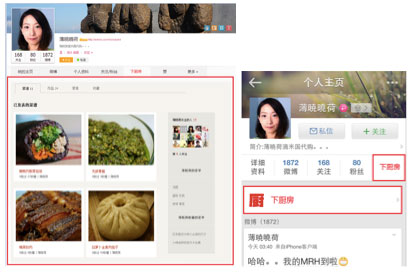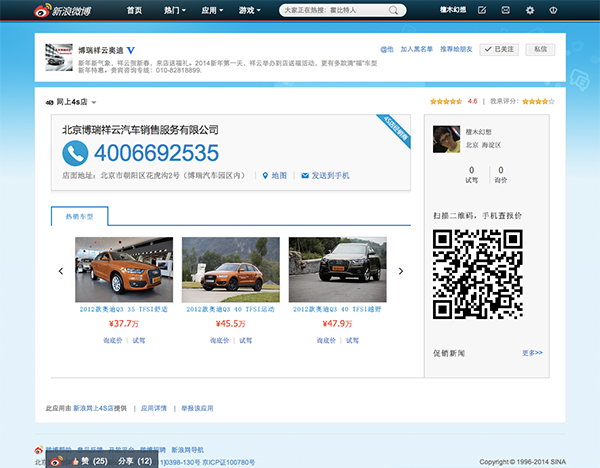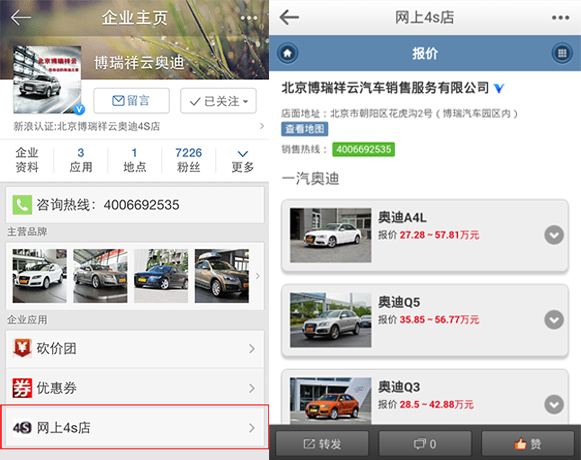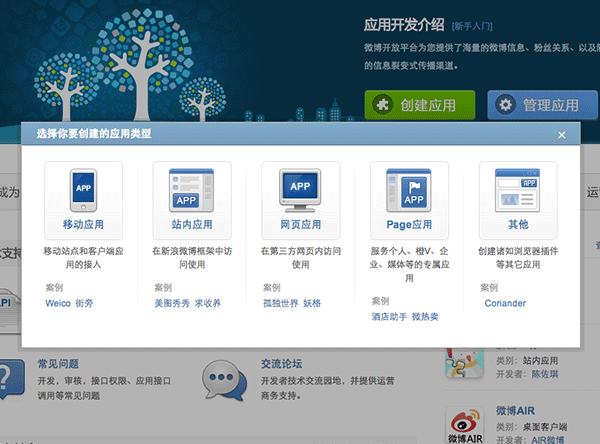What is a Page application
Page application is the main way for third parties to access the Page system. The microblog open platform supports embedding third-party applications into microblog personal homepage (including Web, wap and client) through iframe or interface; Third party applications will provide industry users (such as medical, lawyers, etc.) with business related functional modules, making the personal homepage the entrance to their business promotion.
Page is a general term for microblog homepage of people, institutions and things (such as geographical location, songs, movies, books, etc.) in terms of products. Structured pages are assembled through a unified framework to complete the aggregation of information and functions of individuals, institutions and objects and provide them to users in the form of microblog home pages. It is the node of content and relationship precipitation and propagation in microblog. It is a window for users to obtain information and accept services.
Access example
(1) Personal edition
(2) Enterprise Edition
Access process
The creation and release of applications include the following processes. Note: When creating applications on the platform, developers can select the application application terminal, and when developing, they can adapt the corresponding address and display it in the iframe of each terminal.
(1) Become a developer
Fill in the developer information to become a developer: http://open.weibo.com/developers/basicinfo
After being approved as a developer, you can develop Page applications.
(2) Create app
Select to create a Page application: http://open.weibo.com/developmet
Click to enter the creation page: http://open.weibo.com/apps/new?sort=enterprise
Select the application version: enterprise version/personal version. After selecting, enter the application information filling page
(3) Development test
After the application is created successfully, it can enter the actual development. The page design needs to follow the basic design and interaction specifications. Personal homepage applications that do not meet the design specifications will not be launched.
(4) Submit for review
After you complete the development of the Page application and test that there are no problems, you can click the "Submit for Review" button on the summary information page of the Page application to submit your application to the staff of the microblog open platform for review.
(5) Application goes online
After receiving your application, our staff will contact you and try the application you have developed. If problems are found, we will notify you by email to modify it and resubmit it; If you confirm that the application development has been completed and can be used normally, your application will be approved, indicating that your application is online. At this time, you can submit the UID list of users who can install applications, and enter the microblog operation background (check whether the UID to be installed has application information) and the microblog terminal publishing background (check whether it meets the visual specifications of each end) for review. After all the applications are approved, your application will appear on the user's personal homepage within 3 working days.
Access method
It is mainly introduced through BD cooperation, and the steps are as follows:
(1) Business communication
- -Both parties communicate the product integration point
- -Establish cooperation intention
(2) Product communication
- -Confirm that the combination point can be realized at the product and technical levels
- -Confirm product performance
(3) Application development
- -Quickly complete online application
- -Develop according to documents and specifications
(4) Application launch and promotion
- -Go online after application review
- -Confirm the promotion resources and methods of both parties




